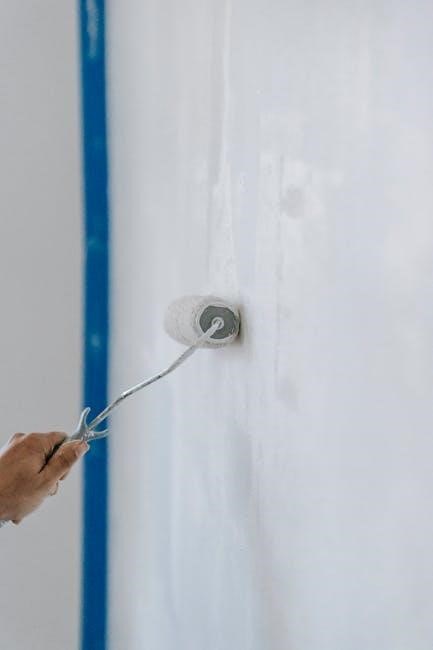Wilbarger Brushing Protocol: An Overview

What is the Wilbarger Brushing Protocol?
The Wilbarger Brushing Protocol, developed by Patricia and Julia Wilbarger, is a therapeutic technique designed to address sensory defensiveness. This protocol involves using a specific brush and technique to provide deep pressure stimulation to the individual’s skin.
What is the Wilbarger Brushing Protocol?
The Wilbarger Brushing Protocol, also known as the Wilbarger Deep Pressure and Proprioceptive Technique (DPPT), is a specific sensory integration therapy technique. Occupational therapists use this to help individuals with sensory processing difficulties. It aims to reduce sensory defensiveness and improve self-regulation. The protocol involves using a particular type of brush to provide deep pressure stimulation to the skin in a specific sequence.
The technique is believed to help normalize sensory processing by altering how the nervous system responds to sensory input. The Wilbarger Protocol aims to improve the individual’s ability to tolerate and process sensory information effectively. This ultimately leads to enhanced daily functioning and reduced sensory-related distress. Training from a qualified occupational therapist is essential before implementing the Wilbarger Brushing Protocol. They provide the necessary instructions and guidance for safe and effective application. The protocol is often integrated into a broader sensory integration therapy plan tailored to the individual’s unique needs.
Purpose of the Protocol
The primary purpose of the Wilbarger Brushing Protocol is to reduce sensory defensiveness and improve sensory processing in individuals with sensory integration difficulties. Sensory defensiveness refers to a heightened sensitivity to sensory input, leading to negative reactions and avoidance behaviors. The protocol aims to normalize sensory processing by providing controlled and predictable deep pressure stimulation.
By stimulating nerve endings in a specific manner, the Wilbarger Protocol seeks to alter and normalize the way the brain processes sensory information. This can lead to improved self-regulation, decreased anxiety, and enhanced ability to participate in daily activities. The protocol is often used to help individuals better tolerate tactile input, such as clothing textures or physical touch. It can improve transitions between activities and enhance attention and focus. The Wilbarger Protocol is intended to be part of a comprehensive sensory integration therapy program. The occupational therapist will tailor the program to the individual’s specific needs.
How the Protocol Works
The Wilbarger Brushing Protocol involves using a specific sensory brush to apply deep pressure to the skin in a prescribed manner. This stimulation is believed to help regulate the nervous system and alter sensory processing. The brushing is performed on specific areas of the body, including the arms, legs, back, palms of hands, and soles of the feet, using a firm and even pressure.
The technique involves long, slow strokes with the brush, moving from the top of each limb or body part downwards. The protocol is typically repeated every 90 minutes to two hours, at least six times a day, for the first few weeks. The deep pressure provided by the brush is thought to stimulate nerve endings. This stimulation can help to normalize sensory input and reduce sensory defensiveness. The Wilbarger Protocol works by providing controlled sensory input to help the brain self-organize. The goal is to improve sensory processing and self-regulation.

The Wilbarger Brushing Technique
The Wilbarger brushing technique requires specific strokes. Use a firm, even pressure without sweeping. Hold the brush horizontally and move slowly down each limb. The entire brushing process should only take a few minutes.
Specific Brushing Instructions
The Wilbarger Brushing Protocol necessitates precise execution for optimal results. Use the special brush provided by your therapist. Apply firm, even pressure, avoiding any sweeping motions across the skin. Instead, think of gently pressing the brush against the skin as you move.
Hold the brush horizontally to ensure even distribution of pressure. Move slowly and deliberately along each area of the body. Start at the top of each limb and work your way downwards, maintaining consistent pressure throughout.
Brush each arm, leg, back, buttocks, palms of hands, and soles of feet. Avoid brushing the face or stomach area. The entire brushing procedure, from start to finish, should take only a few minutes. Remember, the key is firm, consistent pressure.
This technique is designed to stimulate nerve endings and promote sensory processing. Ensure you have received proper instructions from a trained occupational therapist before implementing this protocol. Never attempt to self-administer the Wilbarger Brushing Protocol without professional guidance.
Frequency and Duration of Brushing
The Wilbarger Brushing Protocol requires a specific schedule to be effective. Typically, brushing should be completed every 90 minutes to two hours throughout the day. Aim for at least six brushing sessions daily during the initial 2-3 weeks.
Consistency is key to achieving the desired sensory modulation. Integrating the brushing protocol into daily routines can help maintain this consistency. For example, tie the sessions to regular activities like waking up, before meals, or before bedtime.
Each brushing session should be brief, lasting only a few minutes. The quick, long strokes are designed to stimulate nerve endings without overstimulating the individual. After the initial period, the frequency of brushing may be adjusted based on the individual’s progress and the recommendations of their occupational therapist.
It’s crucial to monitor the individual’s response to the brushing protocol and communicate any changes or concerns to the therapist. Regular follow-up appointments are necessary to ensure the protocol remains effective and appropriate for their needs. Remember, this protocol is designed to alter and normalize sensory processing.

Important Considerations and Precautions
It is important to remember that proper training is required before using the Wilbarger Brushing Protocol. This protocol should only be implemented by individuals who have received face-to-face instruction from a trained occupational therapist.
Training Requirements for Implementation
Proper training is paramount for the safe and effective implementation of the Wilbarger Brushing Protocol. This specialized technique should only be administered by individuals who have received comprehensive, face-to-face instruction from a qualified and experienced occupational therapist. Without proper training, there is a risk of misapplication, which can lead to ineffective outcomes or even adverse effects.

The training process typically involves a thorough understanding of sensory integration theory, sensory processing disorders, and the specific techniques involved in the Wilbarger Protocol. Trainees will learn how to properly assess an individual’s sensory needs, determine if the protocol is appropriate, and tailor the intervention to meet their specific requirements. Furthermore, training covers the correct brushing technique, the appropriate pressure to apply, and the areas of the body to target.
It’s crucial to understand potential contraindications and precautions associated with the protocol, and how to monitor the individual’s response to the intervention. The training emphasizes the importance of ongoing communication and collaboration with the individual, their family, and other healthcare professionals involved in their care.
When to Use the Protocol
The Wilbarger Brushing Protocol is primarily indicated for individuals exhibiting sensory defensiveness, a condition where they react negatively to certain sensory input. This may manifest as heightened sensitivity to touch, sound, movement, or visual stimuli. Children with autism spectrum disorder, sensory processing disorder, or other developmental conditions are often candidates.
The protocol is considered when sensory sensitivities interfere with daily functioning, impacting activities such as dressing, eating, socializing, or participating in school. It may help improve transitions between activities, enhance attention span, and promote self-regulation. Occupational therapists create specialized plans for each individual based on the amount and type of sensory input he/she needs.
Careful assessment is crucial to determine the suitability of the Wilbarger Brushing Protocol. Factors to consider include the individual’s sensory profile, medical history, and overall responsiveness to sensory input. It is important to note that the protocol is not a one-size-fits-all solution and may not be appropriate for everyone. The decision to implement the protocol should be made in consultation with a qualified occupational therapist.
